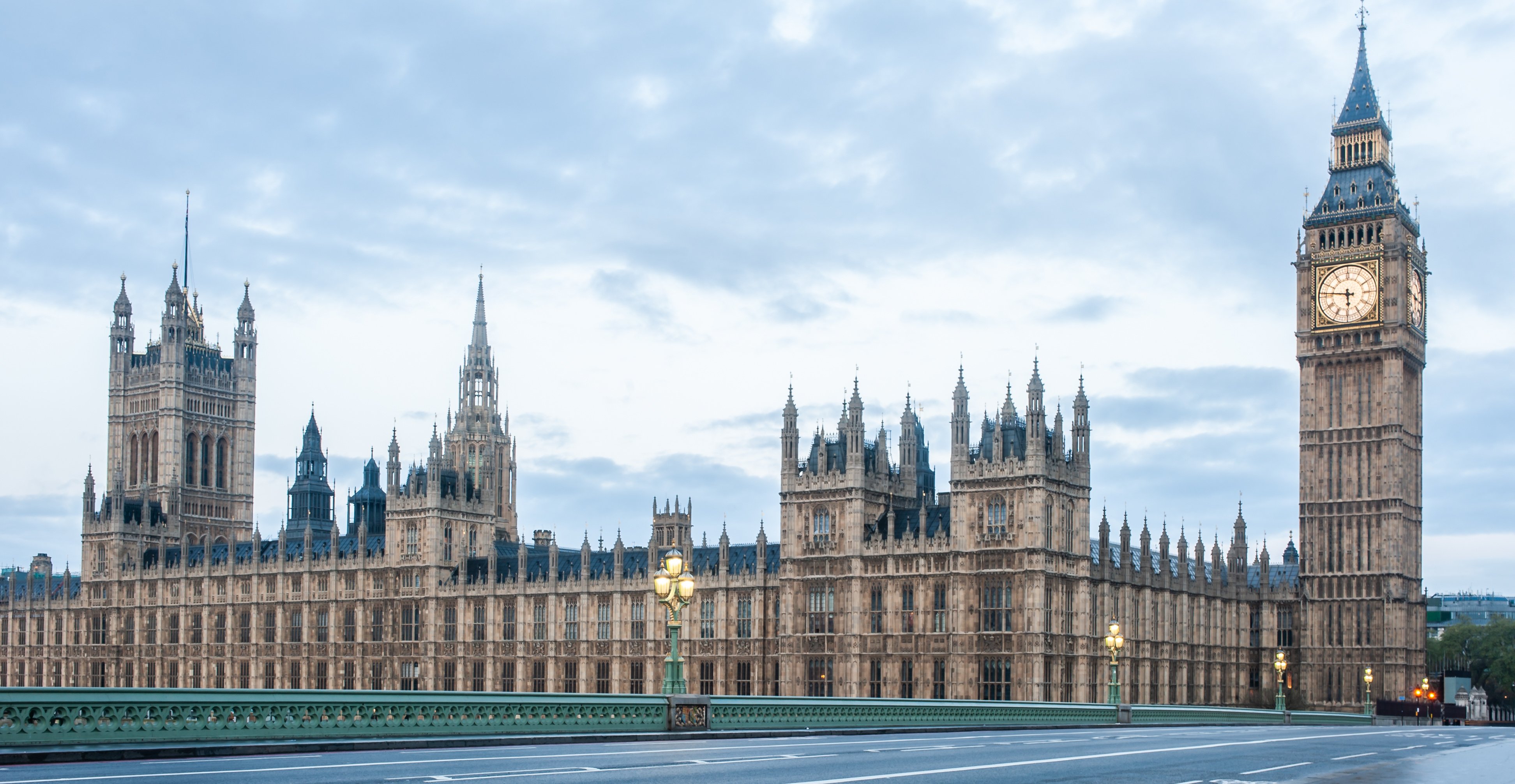Unleashing the drone revolution: the 5 questions that need to be answered
by Inline Policy on 15 Oct 2018
Tighter drone regulation is on its way all acorss Europe, with EASA about to finalise its long-awaited blueprint. But some of the more difficult questions remain unanswered. And they are set to the define the industry for many years to come.
The potential benefits are manifest: from using drones to carry out difficult inspections, last-mile or long-range deliveries and surveillance operations, to deploying them in rescue missions, entertainment, or advertising projects and communication networks. The list is long and growing, with more adventurous plans in the pipeline, for instance in the realm of future mobility solutions.
As with any emerging technology, the principle challenge for policymakers is to find the right mix of stimulating development and continuous innovation; setting the right standards so that different industry players and sectors can properly work together; mitigating the risks and unintended consequences of new applications benefiting from that technology; and working with the public to address concerns and expectations before public opinion turns sour.
Over the past few years, regulators have therefore attempted to lay the groundwork for the growth of the drone sector. This has primarily taken the form of designing fresh rules for small and limited operations, alongside basic product regulation (e.g. CE marking) and other technical benchmarks. Requirements for more complex operations are being updated too, though certification processes and permission systems for certain type of commercial use cases have been in place for many years.
The emerging regulatory framework
In Europe, this new wave of drone regulation is driven, first and foremost, by the European Aviation Safety Agency (EASA), which has been working since 2014 on a new regulatory framework for civilian drones. The cornerstone will be a new classification system in which different kind of operations are qualified by proximity to people and buildings, by the competency of the remote pilot, or minimum age and training requirements. Crucially, it also groups drones according to weight and the integration of certain safety features, placing emphasis on a risk-based approach that will define the recreational and commercial drone markets in the years to come.
Needless to say, the many technical details underpinning this new framework have been, and to some extent still are, subject to intense debate among stakeholders in the industry. For instance, changing the weight categories by merely 50-100g can have a considerable impact on the types of drones that would be captured by, or exempt from, certain requirements. The same could be said for issues such as noise levels or registration. Getting this categorisation right matters a great deal for a sector still in its infancy.
With only 12 months left before a new European Commission takes over, the EU hopes to finalise its regulation in the form of two acts before the end of the year: a ‘Delegated Act’ that defines the conditions for making drones available in the EU and the conditions for drone operations conducted by a foreign (third country) operator; and an ‘Implementing Act’ that defines the general conditions for the operation of drones as well as the conditions for registration.
In parallel, some EU Member States are looking at those stipulations that allow a degree of national flexibility. The UK’s Department for Transport (DfT) has recently consulted on questions around minimum age of drone operators, police powers in relation to drone misuse and airport restrictions, while a draft Drone Bill is expected to be published in the next few months.
Taken together, these processes are set to put the industry on a much more stable regulatory footing. Yet can they also unleash the “drone revolution” that so many have predicted, or indeed promised, in recent years?
Like the sector itself, the policy work is just starting to unfold and even EASA’s landmark regulations will only pave the way for future rules, protocols and guidelines that will be more complex, more constitutive and more consequential. If policymakers are serious about facilitating the integration of drones into our everyday lives and business practices, then big challenges await. The following five questions require particular consideration.
1. Can we create ‘true’ testing sites for drones?
Up to now, EU Member States have been competing in their quest for leadership by granting drone operators and technology innovators exemptions to existing requirements, often coupled to highly specified and isolated testing sites. This approach can deliver important insights into the maturity and practicability of certain operations, but does not invite drone experimentation for any purpose other than that being tested, i.e. just for those operations capable of operating in one particular environment.
In fact, a crucial aspect for any effective testing site that seeks to stimulate a promising technology is that innovating companies should be expected to break things or fail, and then learn from it. Requirements to demonstrate that a very specific operation will be performed safely to completion appear to negate the very purpose of a testing site and, in an unfavourable scenario, might even skew the market toward a limited number of applications that do not offer the best possible value. This challenge is particularly heightened in the context of drones given that they can be deployed in so many different environments and for so many different purposes.
2. How can traffic management systems be introduced in a way that supports innovation?
Few debates in the drone ecosystem are as loaded as the questions around the need for an unmanned traffic management system (UTM). The basic logic is this: increased safety risks due to larger quantities of more capable drones in the sky, as well as the need to create smart rules for long-distance or urban operations, require a very different level of control, planning, oversight and authorisation compared to what we have today. The notion of a UTM is compelling, in particular if it can enable hitherto prohibited operations and, in the future, autonomous flights.
Unsurprisingly, the global race to develop a functioning system is truly on: America and China have been investing heavily in competing concepts, while the EU is pushing its own version of ‘U-Space’ through the Single European Sky ATM Research Joint Undertaking (SESAR JU). Individual European countries, like the UK, are taking their first tentative steps, for instance by exploring the value of a mandatory Flight and Information Notification System (FINS). Hardly a week goes by without a launch of a new UTM or UTM-style initiative.
However, what is missing so far is a clear understanding of how such traffic management systems can best facilitate broad-based, innovation-driven growth of the drone sector. This is because little consensus exists on a number of fundamental questions: the types of drones that ought to be captured by a future UTM; the extent to which on-board anti-collision technologies (OATs) can perform the kind of risk mitigation that a UTM is supposed to deliver; or how to balance the need for greater information sharing with privacy rights of the operator – to name just a few. To find the right sequencing, pace and prioritisation of the UTM rollout thus becomes a tall order for policymakers.
3. How do we increase the social acceptance of drone applications?
When drones appear in the news, it is often because of a reported “near-miss” with a manned airplane – regardless of whether it was actually a white plastic bag or indeed a drone that has reached a height of more than 5,000ft. Other stories, such as criminal gangs using drones to fly contraband into prisons or paparazzo harassing celebrities on private property, have recently joined the mix. All this has led to a degree of negativity in the press that risks undermining the social acceptance of legitimate and useful drone applications.
The few existing surveys on public attitudes to drones do not paint a coherent picture, but generally point towards concerns about safety, security and privacy on the one hand, and a rather vague understanding of how drones can be a force for good on the other. Many governments seem to translate this into a strategy that focuses heavily on tackling the potential misuse of drones (thereby emphasising the problems caused by a small minority of operators) while running cautious campaigns highlighting a few positive examples. Such an approach is unlikely to create the conditions in which drones can become a more ubiquitous feature in our communities. For that, a different kind of public conversation is surely required.
4. Can the public sector embrace drones to a much greater extent?
If you think about the added value of drones beyond recreation, public sector use cases come immediately to the fore: from supporting firefighters and police forces in critical rescue and surveillance missions, to helping authorities manage transport flows, or delivering urgent medical supplies. The opportunities appear to be almost unlimited, not least because public sector bodies are uniquely placed to create legitimate use cases for information-gathering in which data collected by drones can benefit society as a whole.
Today, many state-sponsored institutions already use drones and have even started to train up entire drone units that serve authorities across a number of different functions. But adaption is still largely done in a piecemeal fashion, with little overarching strategy of how drones can contribute to, if no re-invent, public service delivery in areas that could benefit from an injection of technological progress. The scope for bold innovation and experimentation seems huge.
5. What governance model can provide the best leadership?
Regulating any emerging technology is challenging, not least because the structure of most public administrations does not lend itself to dealing with issues that cut across many different departments and agendas. If unaddressed, the result can be disjointed policymaking with contradictory objectives; regulation that is insufficiently future-proofed and therefore prone to frequent alterations; or political messaging that lacks coherence and purpose. This all inevitably leads to cooperation between government and industry that is sub-optimal, at best.
The governance challenge is all too real in the context of drones, given that they can be scrutinised through the lens of transport, security, economic growth, innovation, data and digital, or employment. The right response, though, can take various forms: in 2015, for example, the UK Government set up the Centre for Connected and Autonomous Vehicles (CCAV) to establish a more powerful base in its attempt to make the UK a premier development location for driverless cars.
As a result, CCAV became accountable to both the Department for Business, Energy and Industry Strategy (BEIS) and the Department for Transport (DfT), and frequently convened representative stakeholder forums to ensure the most promising ideas are taken forward. Regardless of whether such a model is also required for governing drones, the bottom line is that the success of the industry also depends on the regulatory innovation capacity within government and its ability to take a holistic view of the sector.
Get all those questions right, and the drone revolution might actually happen.
Topics: European Politics, Transport, Innovation policy, Sharing and on-demand transport, Aviation, Drones, Olaf Cramme







Comments